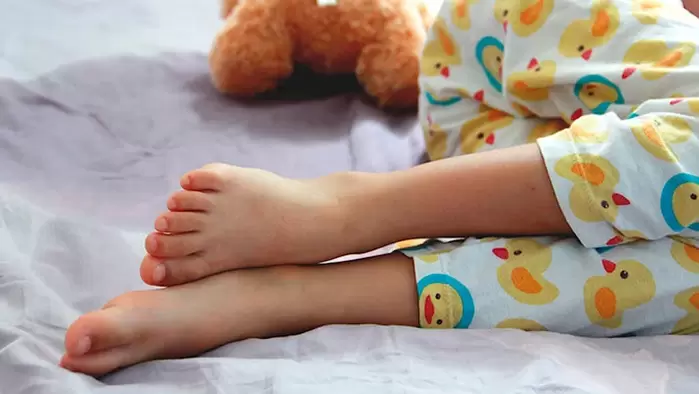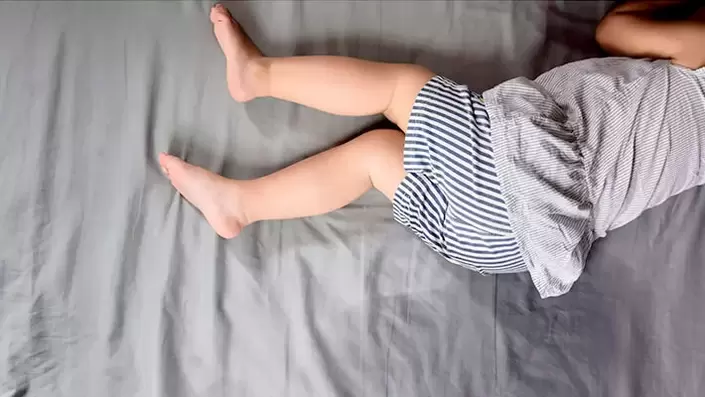Enuresis is a pathology in which a person is unable to control the emptying of the bladder. In the vast majority of cases (over 95%), we are talking about an enuree for children, when checking on urination has not yet been completely formed. However, the disease is also found in adults (in particular the elderly) when the ability to control the emptying of the bladder has already been lost.
The problem of involuntary urination occurs mainly at night, when a person sleeps (up to 80% of all cases). Much less often this happens during the vigil.
There is no exact information on the prevalence of this disease, since far from the parents always turn to the doctor for this. According to relationships, between 5-year-old children, Enuresis occurs in 5-10% of cases; Among 10 years of age in 3-5%; Between the fifteen -year -olds and the largest (enuresis of adults and teenagers) -1%.

Types of disease
The enuresis is classified according to various parameters. Depending on the main cause of the disease, distinguish:
- Primary enuresis. According to statistics, it represents over 90% of cases among children under the age of 5. A characteristic of primary ensence is the absence of any neurological or urological pathologies, against which a person could develop urinary incontinence. With this form of illness, the child has no long periods (from 3 to 6 months), when he wakes up. With the age, the primary enuresis share in the incidence structure is reduced. For example, in children aged 12 years of age, about 50%represent it.
- Secondary enuresis. This type of pathology is also called the applicant, since it occurs again after a long period of remission. In this case, there is a connection with some urological, endocrine or neurological diseases that can contribute to the involuntary urination. It should be noted that this variety of the problem might appear for the first time after the child has reached control over urination (however, not before 6 months later).
Depending on the time of the manifestation, the disease can be the following types:
- Night enuresis. This is the most common version of the disease that manifests itself at night. It is assumed that a night incontinence of urine can be associated with the late maturation of the bladder in a child or in a small volume. Hormonal causes are also possible, for example a low level of vasopressin. This is a hormone that contains humidity in the body. The disease can also be associated with a very strong sleep in a child and difficulty with awakening.
- Daily enuresis. This form of disease is much less common. It is characterized by the fact that patients have problems with control over urination during the day.
Depending on the accompanying diseases and complications of the enacels, it happens:
- Simple. In this case, the patient has no pathological changes caused by urinary incontinence.
- Complicated. This form of the disease is discussed when it proceeds against the background of other disorders. For example, these are infections or anomalies in the development of the urinary system, nervous and other pathologies.
ENOREZ prevention
Parents may recommend some preventive measures that help prevent the onset of the disease. These events include:
- Timely treatment of urinary tract infections;
- Control over the volume of the fluid consumed by the child during the day, but in this case it is worth considering the season and air temperature;
- Health and hygienic education of the child. Implies the teaching of hygiene care for the genitals;
- Timely refusal of diapers. Often, diapers completely cease to use when the child reaches the age of two years;
- If the episodes of urinary incontinence have persisted at night by the child to reach six years, it is necessary to take measures for a global child's examination, establishing the cause of the disease and its treatment.
The reasons for the development of the disease
The reason for enacely development is not known. In this regard, the experts have presented various theories, each of which has a series of indirect tests and, as a rule, is taken into consideration in the treatment. Consider these theories in more detailed way:
- Violation of maturation. It is assumed that the involuntary urination at night or day is associated with a delay in the development of the human nervous system. In addition, these violations can have both organic and psychogenic of nature. In the first case, we are talking about a direct injury of some structures of the brain, spinal cord or peripheral nerves (for example, due to the infection). Psychogenic factors can be emotional shock, traumatic experience and others.
- Inheritance. According to some observations, the probability of developing the disease is higher if the child's parents also suffered from this disease at the same time. Due to the delicacy of this problem, it is quite difficult to identify this model.
- Hormonal theory. A possible cause of night enuresis is a violation of the secretion of vasopressin. This hormone keeps water in the body and its production increases at night. For this reason, a healthy person during sleep is rarely worried about urination. If the child has reduced the production of hormones at night, this contributes to the development of enuresis. It must be said that such hormonal imbalance is observed with some pathologies, for example diabetes Non Naichar.
- Stress. It is not yet clear where the chicken is located and where the egg is. According to observations, many children with urinary incontinence have stressful factors and other mental factors. For example, inexplicable fears, low self -esteem and others. At the same time, when the problem of enacely is solved, the patient's mental state often improves. Therefore, it is possible to collect and serve as a factor in an unstable mental state of a person.
The theories above mainly concern children. As for the enuresis of adults, the following violations and circumstances act here adverse factors:
- Patology of the nervous system, for example stroke, damage to the spinal cord, neurogenic bladder and others;
- Diseases of the urinary system, including renal insufficiency, pathology of the prostate gland, a decrease in the tone of the muscles of the pelvic floor, frequent urinary tract infections and other diseases;
- Pregnancy, because in this state, the strong pressure of the uterus (especially with large size of the fetus and/or its active movement) is on the bladder.
This problem can also be caused by assuming some medicines, for example contraceptive.
Symptoms of the disease
Enorez's main symptom is the involuntary urination. Very often, this happens at night, but it also happens during the day (during the vigil). By the background of urinary incontinence, the following symptoms are also possible:
- shyness;
- Closure;
- Bullshit complexity;
- emotional instability;
- Aggressive behavior (in rare cases).
The enuresis for adults can be accompanied by a frequent urination (often against the background of some diseases). Due to the weakness of the muscles of the pelvic floor (which develops with age), losses of urine is possible during sudden movements, coughing and even resting.
Complications
There are two main groups of complications with an enacement:
- Complications from the psyche and the nervous system. Mainly this applies to children. The child feels lower, closed. Some aspects of children's lives become inaccessible, for example, trips to the fields. The enuresis for adults can also cause such problems. All this is a serious factor in the development of anxiety and depression.
- Complications from the organs of the urinary system. The risk of infectious and inflammatory diseases of the urinary tract increases. These are cystitis, urethritis, prostatitis and other pathologies, which manifest themselves from a painful urination, atypical discharge from the urethra, as well as pain in the horse and lumbar region.
Diagnostics
With an enacement, it is initially recommended to contact a pediatrician (if we are talking about a child) or a therapist. After the initial exam and the investigation, the doctor can direct the patient to restricted specialists: urologist, nephrologist, psychiatrist or neurologist.

The diagnosis, as a rule, includes the following events:
- Survey and neurological examination;
- Ultrasound of the kidneys and bladder;
- General urine analysis, as well as analysis of Neciporenko;
- X -Ray of the lumbar region.
In rare cases, the patient is aimed at other studies, for example CT or magnetic resonance imaging.
Enorez treatment
Enorez treatment is complete. Consider the main components of this therapy:
- Pharmacological treatment. Drugs that reduce the volume of the urine produced are prescribed. These are vasopressin hormone analogues. The dosage and reception mode is selected so that humidity lingers mainly at night (if we are talking about a night ensence).
- The way of taking fluid and nutrition. The doctor will provide recommendations on the use of fluid and the power supply system. In this case, it is necessary to take into account the food diet of a child or an adult, the level of his physical activity, the presence of concomitant diseases and a series of other factors. In particular, it is recommended to abandon the use of caffeine drinks, since they improve diuresis and help to take further liquid. If the patient is playing sports (which means that it actively sweats), we accept the intake of the increase in the volume of the fluid.
- Drumi of Enuranto. At the beginning of the last century, a quick enuremargical special was developed for the treatment of Enorez. The first of these alarms worked at the principle of closing the electrical circuit when the first drop of urine appeared. At the same time, the patient was annoyed by a small electric discharge, due to which a person was awakened. The modern enuremate alarm clocks are acoustic and equipped with a sensitive humidity sensor. The most common option is a clip attached to underwear. As soon as the first drop of urine enters the sensor, the alarm clock works. The task of this treatment is the formation of the reflection "The impulse to urination - awakening". There are also special sheets with sensors, however, unlike a clip an alarm clip, in which case the signal is activated later, when the urine flow already reaches the sheet. The effectiveness of the treatment of night monosyntomatic enuresis with the use of an enlarged alarm clock is about 70-80%.
Depending on the accompanying disorders, the treatment of enuresis can also be taken by the correction of mental or neurotic disorders. The complex treatment of this problem also includes sessions with a psychologist. At the same time, he wouldn't hurt to consult the child's specialist and parents. The psychologist will tell you how to correctly motivate children in order to fulfill all the doctor's instructions to achieve control over urination. The punishment of the child or the formation of an unfavorable emotional environment in the family (due to urinary incontinence) is unacceptable and will aggravate only the situation.
Rehabilitation
As a rule, in children, this pathology takes place after treatment or independently, that it cannot be said about the ensences of adults (since it occurs against the background of some chronic diseases). Therefore, rehabilitation is not required after treatment. In some cases, the child needs lessons with a psychologist or psychotherapist who will help him socialize if the patient had previously had some difficulties in psychological nature.
Prevention
There are no specific measures to prevent enuresis. It is important that parents will join the solution of the problem in the early stages, without waiting for the disease to transmit alone. As for adults, in this case they can be preventive measures:
- timely treatment of bladder diseases and other urological pathologies;
- active lifestyle;
- Preventive exams at the doctor, especially after 45 years.


















